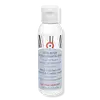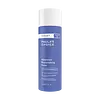What's inside
What's inside
 Key Ingredients
Key Ingredients

 Benefits
Benefits

 Concerns
Concerns

 Ingredients Side-by-side
Ingredients Side-by-side

Water
Skin ConditioningGlycerin
HumectantGlycereth-26
HumectantSqualane
EmollientSorbitan Oleate
EmulsifyingPhenoxyethanol
PreservativeEthylhexyl Salicylate
UV AbsorberAcrylates/C10-30 Alkyl Acrylate Crosspolymer
Emulsion StabilisingColloidal Oatmeal
AbsorbentMel
EmollientSaccharomyces/Honey Ferment Filtrate
Skin ConditioningChrysanthemum Parthenium Extract
Skin ConditioningSodium Hydroxide
BufferingPotassium Sorbate
PreservativeAvena Sativa Kernel Extract
AbrasiveSodium Benzoate
MaskingCitric Acid
BufferingBeta-Glucan
Skin ConditioningCamellia Sinensis Leaf Extract
AntimicrobialGlycyrrhiza Glabra Root Extract
BleachingPropolis Extract
Skin ConditioningSodium Hyaluronate
HumectantXanthan Gum
EmulsifyingEthylhexylglycerin
Skin ConditioningTetrasodium EDTA
Chlorphenesin
AntimicrobialBenzoic Acid
MaskingSorbic Acid
PreservativeWater, Glycerin, Glycereth-26, Squalane, Sorbitan Oleate, Phenoxyethanol, Ethylhexyl Salicylate, Acrylates/C10-30 Alkyl Acrylate Crosspolymer, Colloidal Oatmeal, Mel, Saccharomyces/Honey Ferment Filtrate, Chrysanthemum Parthenium Extract, Sodium Hydroxide, Potassium Sorbate, Avena Sativa Kernel Extract, Sodium Benzoate, Citric Acid, Beta-Glucan, Camellia Sinensis Leaf Extract, Glycyrrhiza Glabra Root Extract, Propolis Extract, Sodium Hyaluronate, Xanthan Gum, Ethylhexylglycerin, Tetrasodium EDTA, Chlorphenesin, Benzoic Acid, Sorbic Acid
Water
Skin ConditioningCyclopentasiloxane
EmollientGlycerin
HumectantGlycereth-26
HumectantPolysorbate 20
EmulsifyingDimethiconol
EmollientLinoleic Acid
CleansingOleic Acid
EmollientLinolenic Acid
CleansingPhospholipids
Skin ConditioningCarnosine
Skin ConditioningEpigallocatechin Gallate
AntioxidantGenistein
Skin ConditioningSodium Hyaluronate
HumectantSphingolipids
EmollientFerulic Acid
AntimicrobialLaurdimonium Hydroxypropyl Hydrolyzed Soy Protein
Glycyrrhiza Glabra Root Extract
BleachingAcetyl Glucosamine
Skin ConditioningQuercetin
AntioxidantOenothera Biennis Oil
EmollientBeta Vulgaris Root Extract
Skin ConditioningCucurbita Pepo Seed Extract
Skin ConditioningLecithin
EmollientCaprylic/Capric Triglyceride
MaskingHydrolyzed Corn Starch
HumectantHydrogenated Lecithin
EmulsifyingPalmitic Acid
EmollientButylene Glycol
HumectantAcrylates/C10-30 Alkyl Acrylate Crosspolymer
Emulsion StabilisingXanthan Gum
EmulsifyingLaureth-23
CleansingLaureth-4
EmulsifyingAminomethyl Propanol
BufferingDisodium EDTA
Sodium Benzoate
MaskingEthylhexylglycerin
Skin ConditioningPhenoxyethanol
PreservativeChlorphenesin
AntimicrobialBenzoic Acid
MaskingSorbic Acid
PreservativeWater, Cyclopentasiloxane, Glycerin, Glycereth-26, Polysorbate 20, Dimethiconol, Linoleic Acid, Oleic Acid, Linolenic Acid, Phospholipids, Carnosine, Epigallocatechin Gallate, Genistein, Sodium Hyaluronate, Sphingolipids, Ferulic Acid, Laurdimonium Hydroxypropyl Hydrolyzed Soy Protein, Glycyrrhiza Glabra Root Extract, Acetyl Glucosamine, Quercetin, Oenothera Biennis Oil, Beta Vulgaris Root Extract, Cucurbita Pepo Seed Extract, Lecithin, Caprylic/Capric Triglyceride, Hydrolyzed Corn Starch, Hydrogenated Lecithin, Palmitic Acid, Butylene Glycol, Acrylates/C10-30 Alkyl Acrylate Crosspolymer, Xanthan Gum, Laureth-23, Laureth-4, Aminomethyl Propanol, Disodium EDTA, Sodium Benzoate, Ethylhexylglycerin, Phenoxyethanol, Chlorphenesin, Benzoic Acid, Sorbic Acid
 Reviews
Reviews

Ingredients Explained
These ingredients are found in both products.
Ingredients higher up in an ingredient list are typically present in a larger amount.
Acrylates/C10-30 Alkyl Acrylate Crosspolymer is a synthetic polymer. It is used to thicken and improve the texture of products. Due to its properties, it can prevent water and oil ingredients from separating.
Benzoic Acid is used to preserve and adjust the pH of products.
The antimicrobial property of Benzoic Acid helps elongate a product's shelf life. Its main role is to reduce fungi growth and is not found to be effective at fighting bacteria. Therefore Benzoic Acid is always added along with other preservatives.
In its pure form, Benzoic Acid looks like a white crystalline solid. It has slight solubility in water.
The name of Benzoic Acid comes from gum benzoin, which used to be the sole source of deriving this ingredient. Benzoic Acid is the most simple aromatic carboxylic acid.
Benzoic Acid is naturally occuring in strawberries, mustard, cinnamon, and cloves. It has a slight scent but is not considered to be a fragrance.
Learn more about Benzoic AcidChlorphenesin is a synthetic preservative. It helps protect a product against bacteria in order to extend shelf life. In most cases, Chlorphenesin is paired with other preservatives such as phenoxyethanol and caprylyl glycol.
Chlorphenesin is a biocide. This means it is able to help fight the microorganisms on our skin. It is also able to fight odor-releasing bacteria.
Chlorphenesin is soluble in both water and glycerin.
Studies show Chlorphenesin is easily absorbed by our skin. You should speak with a skincare professional if you have concerns about using Chlorphenesin.
Learn more about ChlorphenesinEthylhexylglycerin (we can't pronounce this either) is commonly used as a preservative and skin softener. It is derived from glyceryl.
You might see Ethylhexylglycerin often paired with other preservatives such as phenoxyethanol. Ethylhexylglycerin has been found to increase the effectiveness of these other preservatives.
Glycereth-26 is a synthetic ingredient and polyethylene glycol ether of Glycerin. Glycerin is already naturally found in your skin and helps keep your skin moisturized.
It is a humectant and helps add texture to products. It can make your product thicker.
As a humectant, it helps draw moisture from the air to your skin. This helps your skin stay hydrated.
Learn more about Glycereth-26Glycerin is already naturally found in your skin. It helps moisturize and protect your skin.
A study from 2016 found glycerin to be more effective as a humectant than AHAs and hyaluronic acid.
As a humectant, it helps the skin stay hydrated by pulling moisture to your skin. The low molecular weight of glycerin allows it to pull moisture into the deeper layers of your skin.
Hydrated skin improves your skin barrier; Your skin barrier helps protect against irritants and bacteria.
Glycerin has also been found to have antimicrobial and antiviral properties. Due to these properties, glycerin is often used in wound and burn treatments.
In cosmetics, glycerin is usually derived from plants such as soybean or palm. However, it can also be sourced from animals, such as tallow or animal fat.
This ingredient is organic, colorless, odorless, and non-toxic.
Glycerin is the name for this ingredient in American English. British English uses Glycerol/Glycerine.
Learn more about GlycerinGlycyrrhiza Glabra Root Extract is an extract of the roots of Licorice. It has been found to have several benefits such as skin hydrating, conditioning, and soothing.
One component, glabridin, has extra potent antioxidant and soothing properties. It has also been found to block pigmentation from UVB rays in guinea pigs.
Licorice Root also contains a flavonoid. Flavonoids are a natural substance from in plants. Flavonoids also have antioxidant properties.
Another component, glycyrrhizin, has been found to have anti-inflammatory and antimicrobial benefits. This may make licorice root extract effective at treating acne. However, more research is needed to support this.
Liquiritin is one of the flavone compounds found in licorice. It has been found to help lighten skin by preventing tyrosinase from reacting with tyrosine. When the two react, protein is converted to melanin. Melanin is the substance in your body that gives your features pigmentation.
Learn more about Glycyrrhiza Glabra Root ExtractPhenoxyethanol is a preservative that has germicide, antimicrobial, and aromatic properties. Studies show that phenoxyethanol can prevent microbial growth. By itself, it has a scent that is similar to that of a rose.
It's often used in formulations along with Caprylyl Glycol to preserve the shelf life of products.
Sodium Benzoate is a preservative. It's used in both cosmetic and food products to inhibit the growth of mold and bacteria. It is typically produced synthetically.
Both the US FDA and EU Health Committee have approved the use of sodium benzoate. In the US, levels of 0.1% (of the total product) are allowed.
Sodium benzoate works as a preservative by inhibiting the growth of bacteria inside of cells. It prevents the cell from fermenting a type of sugar using an enzyme called phosphofructokinase.
It is the salt of benzoic acid. Foods containing sodium benzoate include soda, salad dressings, condiments, fruit juices, wines, and snack foods.
Studies for using ascorbic acid and sodium benzoate in cosmetics are lacking, especially in skincare routines with multiple steps.
We always recommend speaking with a professional, such as a dermatologist, if you have any concerns.
Learn more about Sodium BenzoateSodium Hyaluronate is hyaluronic acid's salt form. It is commonly derived from the sodium salt of hyaluronic acid.
Like hyaluronic acid, it is great at holding water and acts as a humectant. This makes it a great skin hydrating ingredient.
Sodium Hyaluronate is naturally occurring in our bodies and is mostly found in eye fluid and joints.
These are some other common types of Hyaluronic Acid:
Learn more about Sodium HyaluronateSorbic Acid is a preservative. It is the most commonly used food preservative in the world.
Sorbic Acid is a natural antibiotic and highly effective at preventing the growth of fungus. It is less effective against bacteria.
Potassium Sorbate, another commonly-used preservative, is the potassium salt of Sorbic Acid.
Sorbic Acid may worsen eczema. We recommend speaking with a professional if you have any concerns.
Potassium sorbate and sorbic acid can be found in baked goods, cheeses, dried meats, dried fruit, ice cream, pickles, wine, yogurt, and more.
Learn more about Sorbic AcidWater. It's the most common cosmetic ingredient of all. You'll usually see it at the top of ingredient lists, meaning that it makes up the largest part of the product.
So why is it so popular? Water most often acts as a solvent - this means that it helps dissolve other ingredients into the formulation.
You'll also recognize water as that liquid we all need to stay alive. If you see this, drink a glass of water. Stay hydrated!
Learn more about WaterXanthan gum is used as a stabilizer and thickener within cosmetic products. It helps give products a sticky, thick feeling - preventing them from being too runny.
On the technical side of things, xanthan gum is a polysaccharide - a combination consisting of multiple sugar molecules bonded together.
Xanthan gum is a pretty common and great ingredient. It is a natural, non-toxic, non-irritating ingredient that is also commonly used in food products.
Learn more about Xanthan Gum